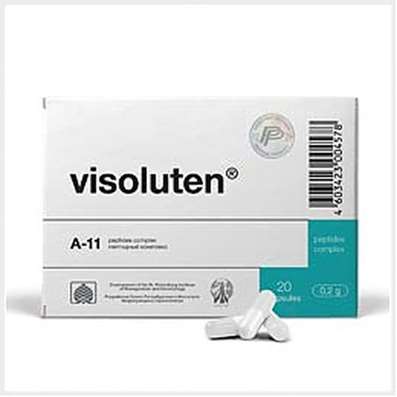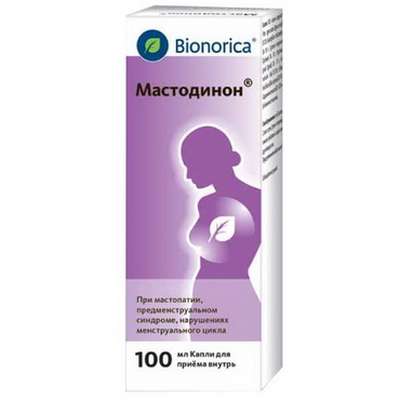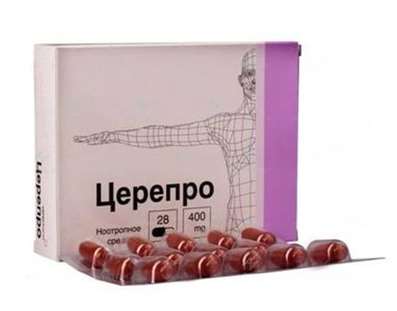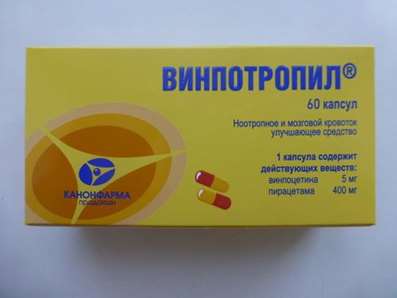Instruction for use: Dextran [average mw 50000-70000]
I want this, give me price
Trade name of the drug – Polyglucinum; Neorondex; Polyglucinum dry
The Latin name of the substance Dextran [average mw 50000-70000]
Dextranum 50000-70000 (genus. Dextrani 50000-70000)
Pharmacological group:
Substitutes for plasma and other blood components
The nosological classification (ICD-10)
A48.3 Toxic shock syndrome: Bacteremic shock; Infectious-toxic shock; Intoxication syndrome; Toxico-infectious shock; Toxic shock; Chronic intoxication in diseases of the digestive tract; Chronic intoxication in gastrointestinal infections; Endotoxin shock
D65 Disseminated intravascular coagulation [defibrillation syndrome]: DIC syndrome; Intravascular coagulation; Hyperfibrinolytic bleeding; Defibrillation Syndrome; Hyperfibrinolytic bleeding; Hyperfibrinolytic bleeding post-traumatic; Hypocoagulant phase of DIC syndrome; Convolation of intravascular disseminated; The syndrome of disseminated intravascular ; Defibrinization syndrome; Coagulopathies acquired
I73.9 Peripheral vascular disease, unspecified: angiospasm; Vasospasm / vasoconstriction; vasospastic disorders; Violation of venous microcirculation; Violation of circulation; Violation of peripheral blood circulation; Lack of peripheral blood circulation in the lower and upper limbs; Peripheral arterial occlusive disease; Peripheral arterial occlusive disease in stages III-IV on Fontaine; Peripheral vascular insufficiency; Peripheral vascular lesions; Peripheral vascular disorders; Peripheral circulatory disorder; spasm of artery; angiospasm; Functional peripheral arterial disease; Chronic occlusive disease; Chronic obliterating diseases of the lower limbs; Chronic arterial occlusive disease
I79.8 Other disorders of arteries, arterioles and capillaries in diseases classified elsewhere: Atherosclerotic occlusive lesions of peripheral arteries; Disturbances of microcirculation; Disorders of microcirculation; Obstruction in the coronary circulation system
I82 Embolism and thrombosis of other veins: Recurrent venous thrombosis; Postoperative thrombosis; Venous thrombosis; Acute venous thromboembolism; Recurrent vein thrombosis; Venous thrombosis; Thrombosis of veins of internal organs; Venous thrombosis; Deep vein thrombosis; Thrombosis of blood vessels; Vascular thrombosis; Thrombosis of veins; Deep vein thrombosis; Thromboembolic diseases; Thromboembolism of veins; Severe venous thrombosis; Embolism; Embolism of veins; Thromboembolic complications
I82.9 Embolism and thrombosis of unspecified vein: Venous embolism; Venous thrombosis; Diseases caused by blood clots in the vessels; Acute vascular occlusion; Acute venous thrombosis; Acute thrombosis of veins; Thrombosis; Thromboembolism; Phlebothrombosis; Embolism
R57.8 Other shock: shock transfusion; obstructive shock; circulatory shock
R57.8.0 * Burn shock: Pain shock for burns; Burn shock
R57.9 Shock, unspecified: Pain shock; Hemolytic shock; Neurogenic shock; Shock; Shock condition; Shock states
R58 Bleeding, not elsewhere classified: Abdominal apoplexy; Hemorrhagia; Haemorrhage of the esophagus; Hemorrhage; Generalized bleeding; Diffuse bleeding; Diffuse bleeding; Prolonged bleeding; Blood loss; Blood loss during surgical interventions; Bleeding during surgery and in the postoperative period; Bleeding during labor; Bleeding and haemorrhage in hemophilia B; Bleeding from the gums; Bleeding intraoperative abdominal; Bleeding against a background of coumarin anticoagulants; Hepatic hepatitis; Bleeding in hemophilia A; Bleeding at hemophilia A; Bleeding with inhibitory forms of hemophilia A and B; Bleeding due to leukemia; Bleeding in patients with leukemia; Bleeding; Bleeding due to portal hypertension; Bleeding due to hyperfibrinolysis; Drug bleeding; Local bleeding; Local bleeding due to activation of fibrinolysis; Massive blood loss; Acute blood loss; Parenchymal hemorrhage; Hepatic bleeding; Postoperative hemorrhage; Kidney bleeding; Vascular-platelet hemostasis; Traumatic bleeding; Threatening bleeding; Chronic blood loss
T79.4 Traumatic shock: Haemorrhagic shock; Crash Syndrome; Posthemorrhagic shock; Postoperative shock; Post-traumatic shock; Post-traumatic shock; Traumatic shock; Syndrome of hemorrhagic shock and encephalopathy
T81.1 Shock during or after the procedure, not elsewhere classified: Operating shock; Postoperative shock; Operational shock
X49 Accidental poisoning and exposure to other and unspecified chemical and toxic substances: Severe intoxication; Carbon monoxide intoxication; Intoxication with arsenic hydrogen; Acute intoxication; Acute poisoning; Acute poisoning; Poisoning; Chemical intoxication; Chemical poisoning; Chronic intoxications; Exotoxicosis; Intoxication; Intoxication with iodine salts; Edema of the brain in poisoning
Model clinical-pharmacological article 1
Pharmacological action. Blood substitute, hyperosmotic solution with osmolarity 0.34-0.37 mmol / kg. Provides plazmozameschayuschee, anti-shock, filling volume of BCC and antiaggregant effect. Due to the high osmotic pressure, which exceeds 2.5 times the oncotic pressure of plasma proteins, it causes active involvement of tissue fluid (20-25 ml per 1 g of polymer) and retains it in the vascular bed for a sufficiently long period. Eliminates violations of systemic hemodynamics, restores bcc, raises blood pressure, UOK and IOC, eliminates spasm of peripheral vessels. The introduction has a positive effect on the normalization of the basic indices of CSR and gas composition of the blood. Increases the suspension resistance of blood, reduces its viscosity characteristics, has a pronounced antiadhesive and antiaggregant effect on platelets, helps to eliminate peripheral stasis and aggregation of erythrocytes, leads to improved rheological properties of blood, activation of microcirculation and increased tissue flow. Infusions reduce the risk of developing DIC syndrome. Non-toxic, pyrogen-free.
Pharmacokinetics. It is excreted from the body, mainly by the kidneys, about 50% is eliminated within the first 24 hours, and after 3 days only trace concentrations are determined in the blood. A small part accumulates in the RES, where it is gradually cleaved with dextranases (acidic alpha-glucosidase) to dextrose (not a source of carbohydrate nutrition), which prevents deposition in the internal organs for a long period.
Indications. To improve hemorheology and microcirculation and reduce the propensity to thrombosis in surgical interventions and conservative treatment of conditions accompanied by a syndrome of increased viscosity and thickening of the blood; Disturbance of macro- and microhemodynamics, improvement of rheological properties of blood, normalization of arterial and venous blood flow, thrombosis, prevention of DIC syndrome. Prevention and treatment: shock conditions (developed as a result of acute blood loss, including during childbirth, ectopic pregnancy, trauma, combined lesions, intoxications and sepsis), surgical and burn shock; ischemic stroke; Addition to the perfusion fluid when using apparatus of artificial circulation.
Contraindications. Hypersensitivity, cardiovascular insufficiency, ongoing internal bleeding, TBI, intracranial hypertension, hemorrhagic stroke, anuria, thrombocytopenia, clinical situations in which the introduction of large volumes of liquids is undesirable (including hypertension, hyperkalemia against a hematocrit lower than 0, 3), severe CRF.
Carefully. Pronounced dehydration.
Dosing. In / in the drip, with acute blood loss - in / a (in a hospital). The volume and rate of administration is determined by the patient's condition, blood pressure, heart rate, hematocrit. Transfusion is carried out in the usual way with observance of the rules for producing transfusion: before the transfusion, a biological sample is made (after the administration of 5-10 drops, a 3-minute break is made, then another 10-15 drops are added and after the same interruption in the absence of symptoms of the reaction (increased heart rate, Hyperemia of the skin, difficulty breathing) continue to transfuse).
With developed shock or acute blood loss - in / in jet, 0.4-2 L (5-25 ml / kg). After raising blood pressure to 80-90 mm Hg. Usually pass to a drop introduction at a rate of 3-3.5 ml / min (60-80 cap / min). Possible in / a mode of administration (in the same dosages). Infusion of the drug should be carried out under constant control of the main indicators of systemic hemodynamics. With a significant increase in central venous pressure, reduce the dose and rate of administration or completely stop.
With blood loss of more than 500-750 ml and severe anemia, the patient is combined with a blood transfusion, erythrocytic mass or erythrocyte suspension necessary to eliminate tissue hypoxia, as well as fresh frozen plasma containing hemostatic system factors.
To prevent operational blood loss, as well as to achieve artificial hemodilution, prevent thrombosis and reduce the tendency to develop or progress the DIC syndrome, the drug is administered in doses of 5-10 ml / kg (for children - 10-15 ml / kg) for 30-60 min Before surgery (in the case of a significant decrease in blood pressure switch to jet injection, with a decrease in blood pressure below 60 mm Hg - in / a). The volume of infusion during surgery is determined by the magnitude of operational blood loss (hematocrit should not fall below 0.3).
In the postoperative period, drip-drop introduction is an effective method of shock prevention.
When burn shock: the first 24 hours in 2.3 liters administered in the following 24 hours - 1.5 liter. Children in the first 24 h - 40-50 ml / kg, the next day - 30 ml / kg.
At extensive and deep burns combined with the introduction of plasma, albumin, gamma globulin; with burns over 30-40% of the body surface - with a blood transfusion.
recommended infusion of the drug to prevent possible dehydration fabrics combined with the introduction of crystalloid solutions in share ratio of 1: 2.
Side effect. Allergic reactions (redness and itching of the skin, angioedema).
Special instructions. Preparation withstands freezing and can be transported at temperatures up to -10 ° C. The freezing of the drug is not a contraindication to its use while maintaining the integrity of the package.
Patients with severe dehydration require pre fluid deficit reduction to dextran injection, the rate of administration should not exceed 500 mL / h. The introduction of the recommended dose has virtually no effect on the hemostatic system. Exceeding the recommended dose may prolong bleeding time.
On the background caused dextrans may reduce hemodilution and protein concentration in plasma Hb. The amount administered should be calculated dextrans thus not to decrease below 90 g Hb / dl (hematocrit 27%) of a more or less long time.
Introduction dextran does not prevent the determination of blood groups and conduct cross-sample standard methods (it is recommended to wash the red blood cells of 0.9% NaCl solution to the study).
The presence in the blood of dextran can affect the results of the enzymatic methods based on papain.
In the study of blood glucose using solutions of sulfuric acid and acetic acid can be obtained glucose concentration greater than it actually is (the latter can hydrolyze dextran).
Dextran transparency lowers blood, and its presence in the blood can change the results of measuring bilirubin concentrations and protein. It is recommended to take a blood sample to determine the concentration of bilirubin and protein prior to administration of dextran.
With the rapid introduction of dextrans in large amounts can trigger the development of acute left ventricular failure and pulmonary edema. In case of complaints of chest tightness, shortness of breath, back pain, as well as upon the occurrence of chills, cyanosis, poor circulation and respiration transfusion should be stopped, in / introduce 10 ml of 10% of CaCl2 solution, 20 ml of 40% dextrose solution , antihistamine drugs, corticosteroids and have the appropriate symptomatic therapy.

 Cart
Cart





